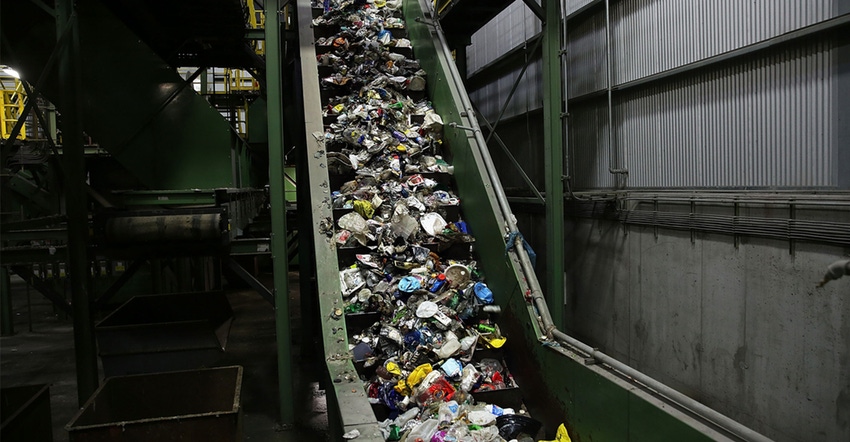AI Revolution Shaping the Waste Industry in 2024 and Beyond: Part Two
In Part One, each expert has already explained how AI will change the industry in the future through helping the sorting processes, making an impact on efficiency and sustainability, and bringing us to new heights in performance, but how do we get there from today? Where do they think AI is the most effective in the waste industry right now?

It’s been a full day since we published part one of our focus on artificial intelligence (AI) in the waste industry and who knows how much it has changed already. It seems like every day, there are new advancements in AI, and one night’s sleep, or even a blink, could cause us to miss it.
In Part One, each expert has already explained how AI will change the industry in the future through helping the sorting processes, making an impact on efficiency and sustainability, and bringing us to new heights in performance, but how do we get there from today? Where do they think AI is the most effective in the waste industry right now?
“I think AI is most effective in helping us gather and understand data. Gathering insight into where and why core problems within waste and recycling crop up and enumerating them allows us to address them more directly and impactfully with various solutions,” said Tanner Cook, CTO & Co-Founder, Clean Robotics.
“AI provides a notable efficiency boost when incorporated into existing facilities, but it’s even more impactful when it’s built in from the beginning at the facility level,” said Matanya Horowitz, founder and CEO, AMP Robotics.
“For example, the cameras that enable object detection and material harvesting in AI-powered facilities also support continuous waste characterization and monitoring of the plant. These cameras allow for tracking of the quality of sorted material, observing residue and infeed compositions, detecting anomalies in performance, and much more. They drive smart capabilities such as dynamically adjusting the sort to keep color balance within a PET bale, automatically detecting and alerting on jams or sort performance issues, and dynamically controlling how to recirculate material to maximize value.”
“The use of AI for identifying and sorting materials in the recycling stream has become more and more common in MRFs and reclaimers. In many cases, AI provides better accuracy than other means of identifying recyclables. When highly accurate AI data is used to power a robot in a sorting facility, it results in a huge increase in material recovery rates,” added JD Ambati, founder and CEO at EverestLabs.
“AI can also be used alone and can provide recycling facilities with valuable insights, helping facilities optimize their operations and increase recovery. All of this results in increased profits. As a result, using AI will be the most effective way to characterize and optimize a plant's performance.”
Following up with Nicole Sroka, CEO at Mind Moves, her article for SWANA, How AI is Revolutionizing Solid Waste Management, discusses the top three areas where AI is implemented in the waste industry today.
AI is transforming waste management through automated sorting systems utilizing robots and machine learning for accurate and rapid waste categorization, route optimization through data analysis for efficient collection, and data-driven decision-making with predictive analytics for effective resource planning and strategy.
Now, those three areas are just scratching the surface of where AI will dip into within the waste industry. Throughout this series, this panel of AI experts have mentioned the impact AI will have on collection, transportation, education, recovery, processing, and more. One could argue that AI will play one of the biggest roles in the waste industry’s future and industry leaders believe that it will be an invaluable asset for the industry.
“You could make a comparison to Information Technology, or IT, where the role AI plays in the waste industry becomes pervasive over time. It’s playing a significant role today that will continue to expand, but it’s happening in a steady, ongoing way in which observers don’t necessarily feel as though there’s a single moment or tipping point when it’s occurring,” said Horowitz.
“AI will play a huge role in creating a more efficient and economical recycling industry which will support the circular economy,” added Ambati.
“It will help recycling companies increase their material recovery and revenue which will therefore give packaging companies a higher yield of feedstock for recycled packaging allowing CPG brands to commit and meet their circular packaging goals. This increase in recycled feedstock from MRFs will help reclaimers compete with virgin packaging production and increase the access of recycled content for packaging companies to base their future products on.”
“At our current trajectory, [AI] will be an indisposable tool that will be in everything,” claims Cook.
AI obviously has its advantages but there is a dark, looming cloud as well. Many people I’ve spoken to in the waste industry have expressed concerns over what it means for their companies to bring in AI and fear of losing their jobs. Part three of this series will explore the existing concerns of AI in the waste industry and how companies should handle those types of concerns.
About the Author(s)
You May Also Like




